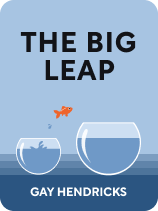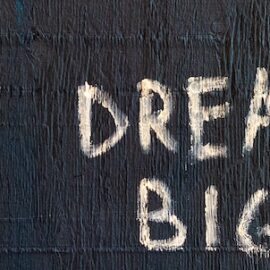

This article is an excerpt from the Shortform book guide to "The Big Leap" by Gay Hendricks. Shortform has the world's best summaries and analyses of books you should be reading.
Like this article? Sign up for a free trial here .
Would you say you’re living your best life? If not, what do you think is preventing you? What excuses do you give yourself for not pursuing the things you want to do in life?
Many people feel frustrated and unhappy with some aspects of their lives, blaming outside forces. We all have excuses for why we can’t do what we’d love to be doing. But our excuses are never really the reason we don’t act; underlying those excuses are self-doubt and fear of failure. We need to shift to thinking about the inner resources we do have to start living our lives. The first step is to envision what living our best life looks like.
Here’s some food for thought on how to live your best life.
Envisioning Your State of Fulfillment
In his book The Big Leap, Gay Hendricks offers some advice on how to live your best life, that is, to live in a state of fulfillment. The first step, he says, is to get clear on what that state of fulfillment would really look like for you. What’s the driving force behind why you love what you love? To find your driving force, or “passion,” ask yourself these questions:
1. What do I love doing so much that I never tire of it, and that it doesn’t even feel like work to me? Ponder this deeply until you have a clear answer.
2. What aspect of my current work gives me the greatest amount of satisfaction? Here, Hendricks says that everyone has something. It can be a really small, seemingly insignificant part of your work, such as chatting with your coworkers. Once you find this, start putting a high priority on doing some of it every day. Think about how you generally prioritize tasks in your life, and whether you can re-prioritize to put these high-satisfaction activities above other lower-satisfaction activities.
3. What special gift or talent do I have? This one may take some deep examination to get to. It may be an ability within another, within another. Hendricks describes it as like a set of Russian dolls, so he says you need to keep digging until you get to the foundational passion or gift. Use this example to follow this line of questioning:
- When in my life do I feel like I’m really shining?
- What specifically am I doing when I feel that way?
- What is it that I love about doing that?
Continue this line of questioning until you feel an inner spark of excitement, and you’ll know you’ve discovered your gift. For example: I feel like I’m really shining when I’m creating art. Specifically, I’m translating a vision I have in my mind into a visible creation using paint or other materials. What I love about that is being able to use my imagination to create something that adds beauty to the world. That’s my gift! Now I can think about how to apply that to my career and other areas of my life.
Once you have explored this line of questioning, Hendricks says, you should have a clear picture of what living in a state of fulfillment would look like for you. Use this to write a new story for yourself.
| Dream Up a New Story for Yourself If you’re having trouble getting to the heart of your passion with this line of questioning, or just want to go more deeply into this question, consider self-help guru Tony Robbins’s thought exercise called The Rocking Chair Test. He suggests you imagine yourself toward the end of your life sitting on a rocking chair on your porch, reminiscing over your life. Imagine what kinds of regrets you might have. What do you wish you might have accomplished or done more of in your life? Use anything that comes up here to think about what passions you might want to pursue now so that you don’t end up with those regrets. As far as writing a new story, Hendricks doesn’t explain whether that means actually writing it out or just using your imagination to envision it. But You Are a Badass gives a step-by-step guide to uncovering some of your limiting beliefs and the narratives you use to justify them. Jen Sincero suggests that we cling to our limiting beliefs because we get some benefit from them (for example, it relieves us of responsibility). So, she advises that you write down each false belief you can identify, and then write what benefit you think you’re getting from holding on to that belief. For example, if you think “I’d love to start my own business, but I don’t have the time or resources to do it,” you may realize that by believing that, you relieve yourself of the hard work and burden of trying and of risking failure. After you’ve done this, you can replace each of those limiting beliefs with a positive version—for example, “Many people start successful businesses, so I can too.” |

———End of Preview———
Like what you just read? Read the rest of the world's best book summary and analysis of Gay Hendricks's "The Big Leap" at Shortform .
Here's what you'll find in our full The Big Leap summary :
- How to overcome the psychological barriers to success and fulfillment
- Why most people have a self-imposed limit to happiness
- How to identify your own false beliefs and stop self-sabotaging






